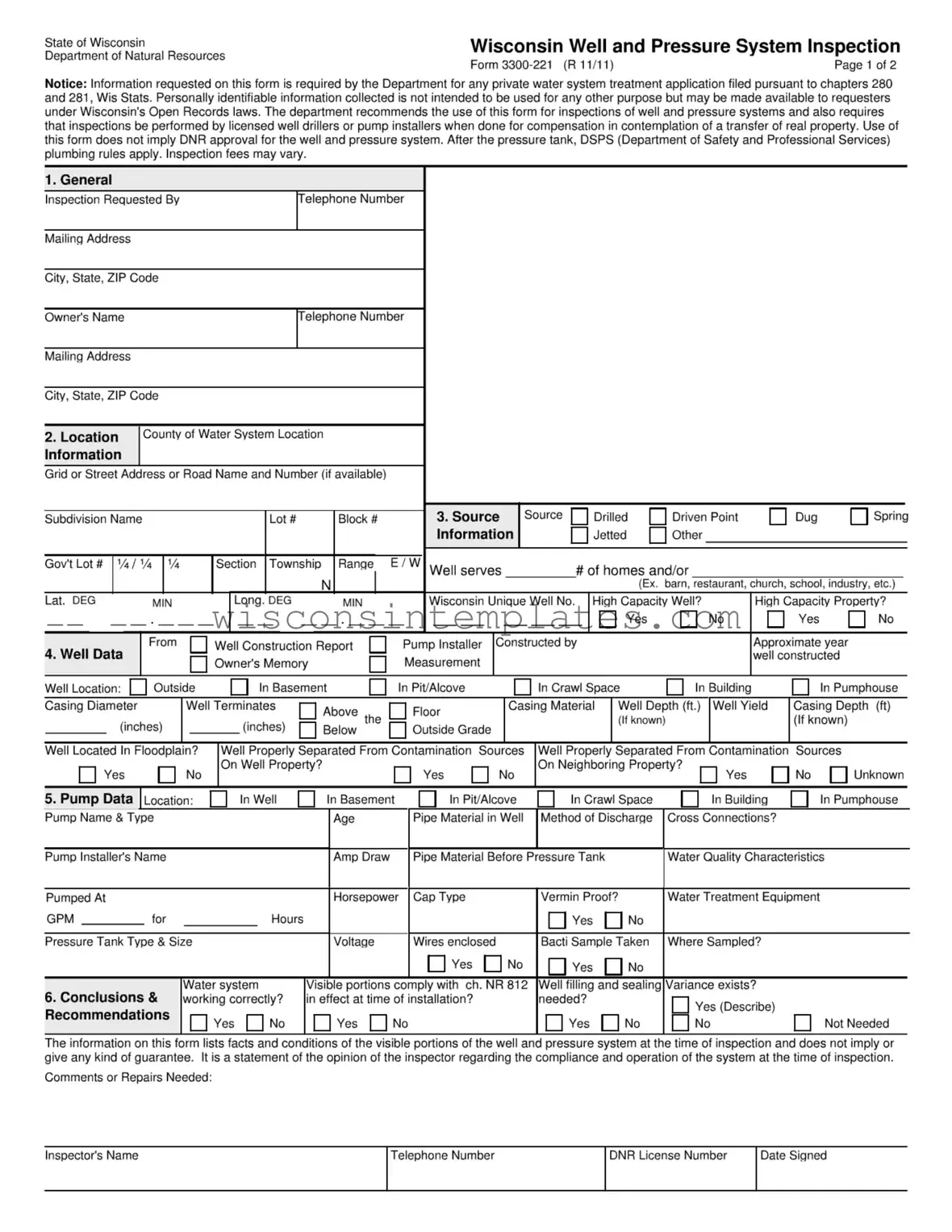The Wisconsin Well Inspection form serves as a vital tool for ensuring the safety and compliance of private water systems in the state. This comprehensive document, issued by the Department of Natural Resources, is essential for anyone seeking to apply for treatment of a private water system. It collects necessary information about the well and pressure system, including details about the owner, location, and construction. The form is designed to be filled out by licensed professionals, such as well drillers or pump installers, particularly when inspections are conducted for compensation or in anticipation of real estate transactions. It is important to note that while the use of this form is recommended, it does not imply approval from the Department of Natural Resources. The inspection process encompasses various aspects, including the condition of the well, its separation from contamination sources, and compliance with existing plumbing rules. Additionally, the form provides space for inspectors to document conclusions, recommendations, and any necessary repairs, all of which contribute to maintaining the integrity of Wisconsin's water systems. By adhering to the guidelines outlined in this form, property owners can better understand their responsibilities and the importance of keeping their water systems up to code.
